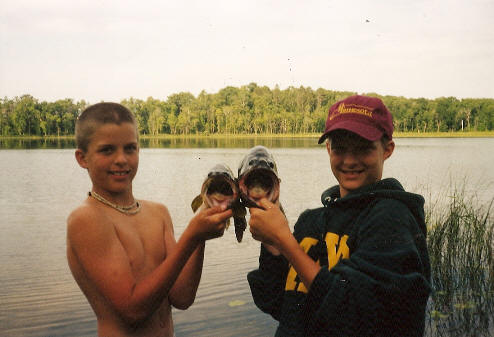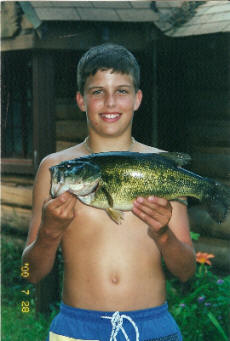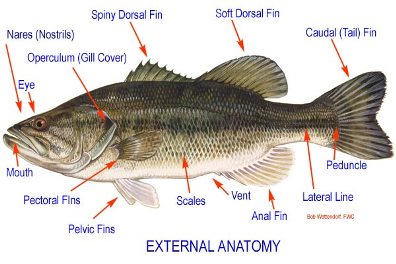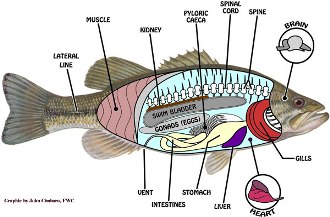They Did What?
Largemouth bass overcome environmental changes and have adapted to become very successful. One reason why they are so successful is that they are not limited to one specific type of prey (see Nutrition). They prey upon a number of species, and therefore maintain a healthy secure lifestyle. Another adaptation that has allowed largemouth bass to become so well adaptive to different environmental conditions is their ability to withstand a greater change in water temperatures. Largemouth bass can withstand warmer water temperature that has a lower concentration of oxygen gas available. In comparison walleye need much colder water and a much higher oxygen concentration to live. Optimal growth for largemouth bass occurs at a dissolved oxygen level at 5.0 ppm or above. Compared to walleyes that need around 9.0 ppm or above.

An adaptation between the largemouth bass and the smallmouth bass a very close relative is the jaw size. Yes, the largemouth bass has a larger mouth than the smallmouth bass. To distinguish the differences between the two look at the closed mouth and if it extends beyond the eye it is a largemouth bass. If it only extends to the middle of the eye it is a smallmouth bass. This adaptation allows for a greater amount and size of prey to be consumed.

Largemouth bass perceive their environment
through visual, auditory, and chemical means.
The lateral line which is located on the left and right side and
runs from the gills to the base of the tail. This lateral
line is how they detect motion,
sound waves, and helps with navigation.
See below for more information.
Interesting fact:
The record largemouth bass was 32 1/2
inches long, 28 1/2 inches around, 22 pounds 4 ounces and was
caught in Montgomery Lake, Ga., in 1932.
Eye: The eyes are located at the front part of the head.
The largemouth sees with its eyes and can detect color with
them. The eyes are located in such a way that they detect
prey in front and above them.
Nostrils: The nostrils are at the very front and are used to
detect the faintest odors. They also can be used to detect
chemicals and toxins.
Fins: The fins are used for movement and for protection.
The spiny dorsal fin is lined with spines that ray out from the
back and can be used as a form of protection from predators.
Pelvic, anal, dorsal fins are all used for control and steering
while the caudal fin is used for the power and thrust.
Mouth: Where nutrients are taken in and connects to the stomach. A trait that allows this species to consume a larger size
of prey compared to its closest relative the smallmouth.
Lateral Line: Used in detection of pressure changes in the
water. The Lateral line runs from the tail along both
sides to around the eye. This adaptation allows for
detection of danger, and food capture.
Scales: Scales cover the outside of the body of the bass
providing protection from predators and the environment. The scales are also covered in a
mucus layer which aids in preventing infections. (Anglers must
be careful not to remove the mucus layer if planning on
releasing the fish).
Gills: Provide oxygen uptake for the bass. The gill arches
are unidirectional meaning that water flows in one direction
over them. The operculum protects the very sensitive
gills. Countercurrent exchange is the flow of water over
the gill arches, blood flow comes from the opposite direction.
The countercurrent exchange sets up a diffusion gradient for the
uptake of oxygen gas.
Spine: Made up of many hollow vertebrae that run the horizontal
length and house the spinal
chord.
Spinal Cord: Nervous system controls helping in motor reflexes
and muscle stimulation. Also relays critical information from the brain to the
rest of the body and vise versa.
Swim Bladder: A organ capable of filling and releasing air for
controlling the bass' buoyancy.
Heart: Two chambered heart consisting of one atrium and one
ventricle. The heart then circulates blood through a closed circulatory system.
Kidney: Filtering waste products from the blood of the bass.
Brain: All sensory information is processed here and relayed
electrical signals through the spinal chord and nerves to the
body.
Now learn all about reproduction!

